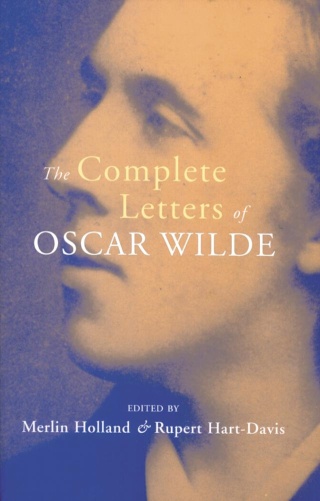 For the first time in one volume, this complete collection of all the short fiction Oscar Wilde published contains such social and literary parodies as “Lord Arthur Savile’s Crime” and “The Canterville Ghost”; such well-known fairy tales as “The Happy Prince”, “The Young King”, and “The Fisherman and his Soul”; an imaginary portrait of the dedicatee of Shakespeare’s Sonnets entitled “The Portrait of Mr. W.H.”; and the parables Wilde referred to as “Poems in Prose”, including “The Artist”, “The House of Judgment”, and “The Teacher of Wisdom”.
For the first time in one volume, this complete collection of all the short fiction Oscar Wilde published contains such social and literary parodies as “Lord Arthur Savile’s Crime” and “The Canterville Ghost”; such well-known fairy tales as “The Happy Prince”, “The Young King”, and “The Fisherman and his Soul”; an imaginary portrait of the dedicatee of Shakespeare’s Sonnets entitled “The Portrait of Mr. W.H.”; and the parables Wilde referred to as “Poems in Prose”, including “The Artist”, “The House of Judgment”, and “The Teacher of Wisdom”.
In this audio guide to Wilde’s shorter fiction, John Sloan of Harris Manchester College, Oxford introduces some of the themes and concerns that preoccupied Wilde the short story writer. Click on the links to listen to the clips.
A “Jester at the Court of English Literature”?
- Though perhaps better known for his plays and his novel, The Picture of Dorian Gray, Oscar Wilde (1854-1900) published three collections of short stories during his lifetime. Click here for an introduction to Oscar Wilde’s literary career and the place of the short story within it. [4:58]
- Wilde’s short stories have tended to attract less attention than his other writing, but a “rediscovery” of Wilde’s Irishness has led critics to re-examine them and reflect on how Wilde would develop his stories from tales he would tell to his friends and admirers. Click here for more on this reconsideration of Wilde’s short fiction. [4:19]
“Many secrets, many meanings”
- What attracted Wilde to fairy tale and myth? What was Wilde’s response to the models in these genres provided by Hans Christian Andersen? As John Sloan makes clear here, Wilde was was seeking to do something quite different from his Danish predecessor. [5:14]
- Wilde strenuously resisted biographical readings of his work and spoke of his writing having “many secrets and many meanings”. Yet readers still seek encoded homosexual meanings in his work. Click here to listen to John Sloan explain why this may be one possible interpretation, but should not be seen as the only one. [7:09]
- The suffering Christ-figure is a recurrent one in Wilde’s short stories. Click here to find out what attracted him to portray Christ in this way. [1:39]
Reading Wilde today
- Wilde’s original readers were drawn to his tales for their treatment of topical themes. So why read him today? As John Sloan argues here, Wilde’s short fiction has a continuing appeal for its comic subversion of expectation and its refusal to package meaning up in tidy conclusions. [3:27]
